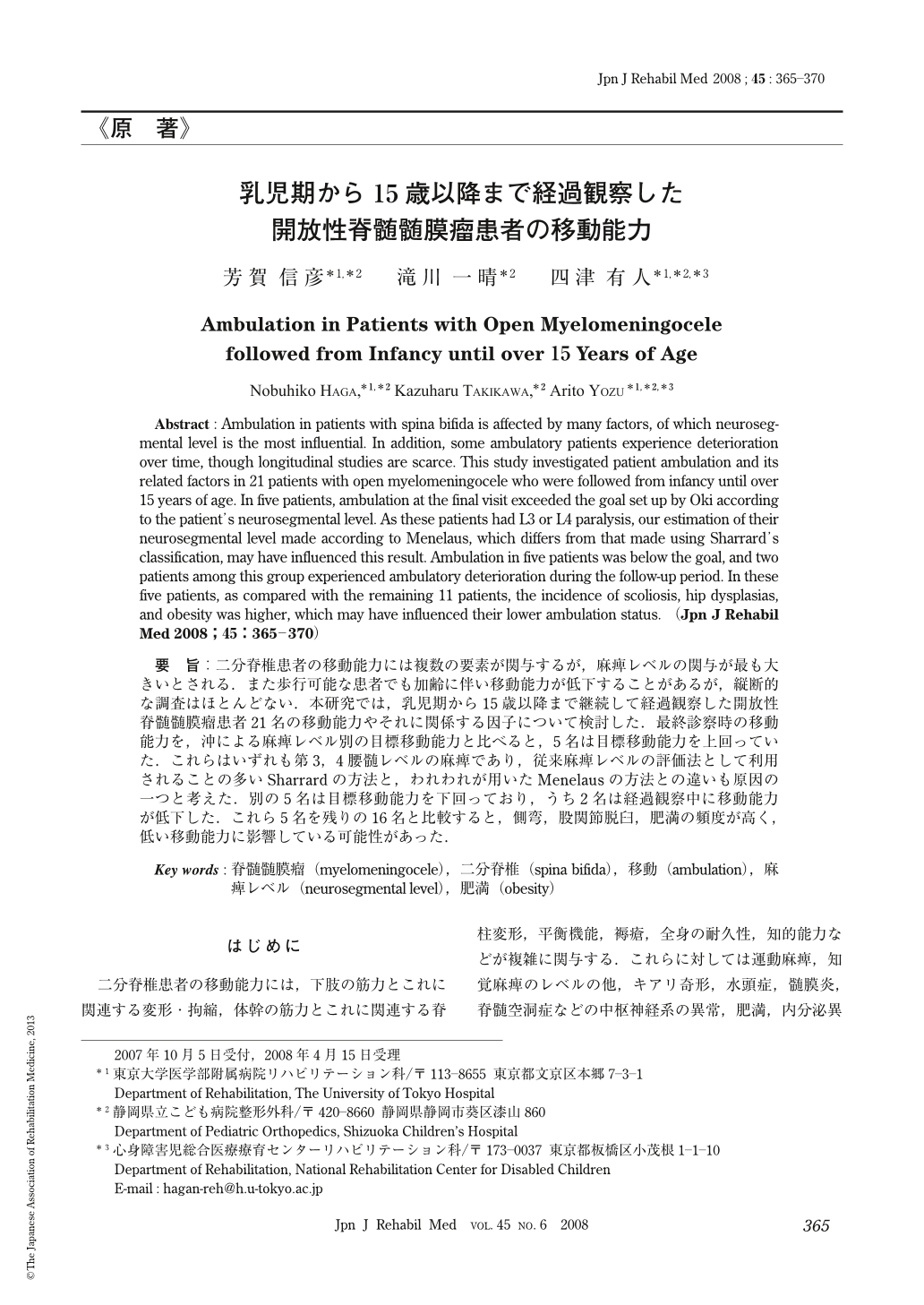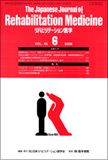Japanese
English
- 販売していません
- Abstract 文献概要
- 1ページ目 Look Inside
- 参考文献 Reference
要旨:二分脊椎患者の移動能力には複数の要素が関与するが,麻痺レベルの関与が最も大きいとされる.また歩行可能な患者でも加齢に伴い移動能力が低下することがあるが,縦断的な調査はほとんどない.本研究では,乳児期から15歳以降まで継続して経過観察した開放性脊髄髄膜瘤患者21名の移動能力やそれに関係する因子について検討した.最終診察時の移動能力を,沖による麻痺レベル別の目標移動能力と比べると,5名は目標移動能力を上回っていた.これらはいずれも第3,4腰髄レベルの麻痺であり,従来麻痺レベルの評価法として利用されることの多いSharrardの方法と,われわれが用いたMenelausの方法との違いも原因の一つと考えた.別の5名は目標移動能力を下回っており,うち2名は経過観察中に移動能力が低下した.これら5名を残りの16名と比較すると,側弯,股関節脱臼,肥満の頻度が高く,低い移動能力に影響している可能性があった.
Abstract : Ambulation in patients with spina bifida is affected by many factors, of which neurosegmental level is the most influential. In addition, some ambulatory patients experience deterioration over time, though longitudinal studies are scarce. This study investigated patient ambulation and its related factors in 21 patients with open myelomeningocele who were followed from infancy until over 15 years of age. In five patients, ambulation at the final visit exceeded the goal set up by Oki according to the patient's neurosegmental level. As these patients had L3 or L4 paralysis, our estimation of their neurosegmental level made according to Menelaus, which differs from that made using Sharrard's classification, may have influenced this result. Ambulation in five patients was below the goal, and two patients among this group experienced ambulatory deterioration during the follow-up period. In these five patients, as compared with the remaining 11 patients, the incidence of scoliosis, hip dysplasias, and obesity was higher, which may have influenced their lower ambulation status.

Copyright © 2008, The Japanese Association of Rehabilitation Medicine. All rights reserved.


